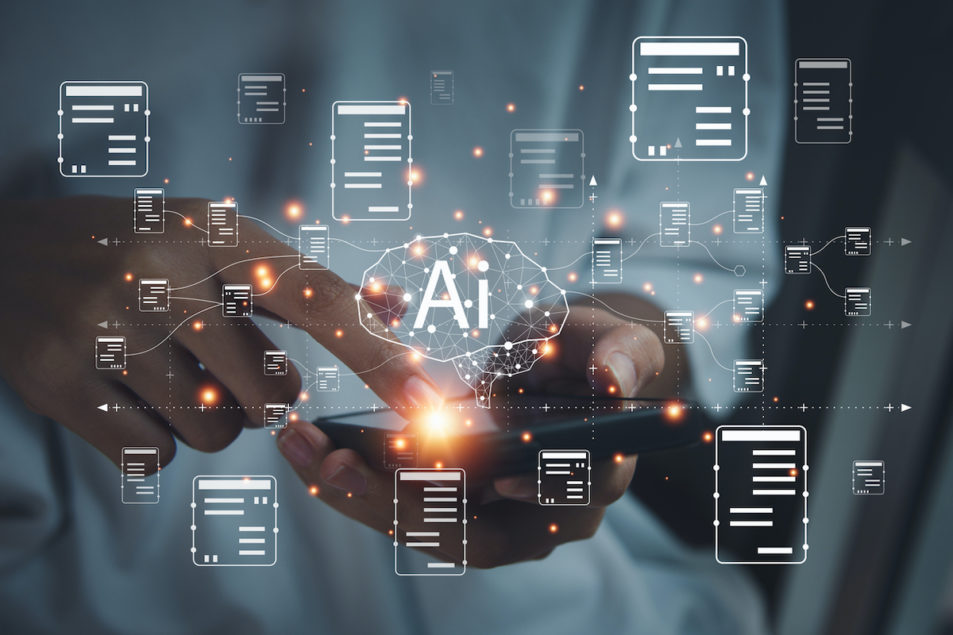
Contracts are the lifeblood of a company, but given their opaque language, realizing their full business value has been difficult.
“Most contract data is in the form of terms that even lawyers have trouble understanding,” says Alex Nadesan, vice president, SAP Global Alliance at Icertis. “Your average procurement professional doesn’t stand a chance of applying their terms to daily operations. So, contracts end up residing in a kind of no-man’s land. They are critically important because a business can't operate without them, but they end up being ignored because people don’t understand them or have easy access to them.”
The terms of commercial agreements can be as ambiguous as they are obscure. “Contract language is sometimes presented in ways that are imprecise,” says Nadesan. “Legal arguments are often subject to interpretation.” That, of course, makes them even more challenging to use in an effective way.
A single contract on its own would create enough of a challenge. However, a typical company has hundreds or even thousands of commercial agreements, the interlocking terms of which are difficult to comprehend and may even affect the validity of others in unanticipated ways. “Some big companies have tens of thousands of contracts,” says Nadesan. “Microsoft, for example, executes 150,000 statements of work (SOWs) a year in just one area of its business.”
The problem is made worse because of the transitory workforce element. If the person who had written a contract leaves a company, the replacement may not review the terms of the document or even realize it exists.
The task of corralling the related meanings of all such documents is overwhelming. No wonder the standard operating procedure for contracts is to sign them, file them and forget about them. But that can be costly. Companies who fail to derive the full value from their commercial agreements risk leaving money on the proverbial table.
“The typical legal team spends hundreds of thousands of dollars negotiating the best possible terms in contracts to ensure their organization gets the best possible deals,” adds Nadesan. “Then what happens to the documents? They sit on hard drives somewhere, and nobody looks at them again unless there’s a problem.”
GenAI to the Rescue
Generative AI has the ability to make contracts more understandable. Using advanced software technology, contract analytics extracts useful information from legal documents. Natural Language Processing (NLP), analyzes language within contracts, highlighting important details and providing a clearer overall picture across a company’s legal portfolio.
Generative AI (GenAI) also has the potential to transform the contracting practices of companies by significantly reducing the contract authoring, review times, and making negotiations of commercial agreements more effective. This is a great help in the often-sluggish and complex contract management process. For instance, it could start with a pre-execution master service agreement (MSA) and continue through the creation of statements of work (SOWs). GenAI will be able to ensure that everything that the company has mandated in the MSAs makes its way into the SOWs.
GenAI provides the ability to access all the data contained in a company’s repository of contracts. A vital initial step in the process, then, will be the transformation of the text data from thousands of PDF documents into machine language, creating a single repository of digitalized contracts, centralized on the cloud, and accessible by GenAI.
With this data at its disposal, GenAI can identify and maximize the opportunities that lie hidden in a company’s contracts by facilitating easier access for all teams dealing with legal contract terms, clauses, and obligations. “The capability to constantly sift through the language and make sure that everybody's living up to the obligations that were agreed upon becomes very powerful for organizations and saves tremendous amounts of revenue,” says Nadesan. The ability to discover critical business insights hidden in contractual language is a major step up from traditional AI, which has had difficulty with dense legal language.
In recent years, AI has been able to structure much of the data in contracts, which has greatly helped company operations. For example, AI not only knows what an inflation clause looks like, but can also identify the critical principles that exist in inflation clause variations in tens of thousands of contracts, recognize their natural language patterns, and sum up their relevant principles in plain English for consumption by the diverse user personas participating in the contracting processes. It can then alert the company when a specific increase in the economy’s inflation triggers a price increase and specify the locations of the relevant clauses in all of the contracts. And it can do all of that in a seamless process.
A common challenge with traditional AI, however, is its dependence on additional processing prior to utilization by the functional users outside legal teams. For example, traditional AI could provide information about the presence or absence of an indemnification clause in a contract, but to understand the ramifications of that clause to company operations, the output from AI required interpretation by a dedicated software program or professionals.
Today’s GenAI does away with the middleman. It allows business users to “converse” in natural language with their contract intelligence systems, asking questions about the ramifications of contract terms and receiving productive responses. “GenAI can respond in understandable terms to a question such as ‘Is the contract’s indemnity clause compliant with our company policy?’” says Nadesan “That’s significant.”
In essence, GenAI transforms static contracts into living entities that operate very much as helpful coworkers, wringing the most value out of commercial agreements from their initial creation through their lifecycle. GenAI can also respond to inquiries with a host of value levers.
Authoring Contracts
GenAI allows a company to realize the maximum value from its created contracts, but it can even play a critical role in initial contract creation. The technology enables users to ask a series of relevant questions to uncover unexpected risks during negotiations. Examples are: “Is there an indemnity clause? Does it comply with our rules? Is there a protection for personal information? Are we being safe with data?” The answers to the questions will allow GenAI to state the risk level of the contract.
“GenAI can rapidly generate close to 98% of all of the analytical work required to complete a new contract,” says Nadesan. “Because it has access to a pool of hundreds of thousands of previous contracts that are similar in terms of suppliers and vendors, it can make valid assumptions, and then hand the work over to a human legal team to complete the baseline markups.”
The future of business lies in Gen-AI powered intelligent contracting, from initial creation to convergence with other commercial agreements, and into the years during which its terms can affect company operations in surprising ways. “Eventually, we envision that the system will talk to the business, with minimal human intervention,” says Nadesan.
The New CLM
In the years ahead, GenAI will become an essential copilot for businesses, providing insight that has a direct impact on the bottom line. “GenAI is going to make it easy to understand contracts,” says Nadesan. “It’s time for companies to start thinking about what value they could get from their contracts if they could ask anything.”
Whatever the value of GenAI to company profits, the work ahead is vast because most organizations have not yet begun the process. “CLM is a brand-new market for GenAI in many cases,” says Nadesan. “Companies have made great advances in enterprise systems for procurement, finance and sales management, but contracts truly sit in the center of all the company’s activities. They will be one of the biggest transformative pieces of the business puzzle.”
Resource Link: www.icertis.com
- SEO Powered Content & PR Distribution. Get Amplified Today.
- PlatoData.Network Vertical Generative Ai. Empower Yourself. Access Here.
- PlatoAiStream. Web3 Intelligence. Knowledge Amplified. Access Here.
- PlatoESG. Carbon, CleanTech, Energy, Environment, Solar, Waste Management. Access Here.
- PlatoHealth. Biotech and Clinical Trials Intelligence. Access Here.
- Source: https://www.supplychainbrain.com/articles/38868-how-generative-ai-will-shape-contracting
- :has
- :is
- :not
- $UP
- 000
- 150
- a
- ability
- Able
- About
- access
- accessible
- across
- activities
- Additional
- Adds
- advanced
- advances
- affect
- again
- agreed
- Agreement
- agreements
- ahead
- AI
- Alert
- alex
- All
- allow
- allows
- also
- amounts
- an
- Analytical
- analytics
- analyzes
- and
- answers
- anything
- Applying
- ARE
- AREA
- arguments
- AS
- ask
- asking
- assumptions
- At
- authoring
- average
- away
- Baseline
- BE
- because
- become
- becomes
- been
- begun
- being
- BEST
- Big
- Biggest
- Bottom
- business
- businesses
- but
- by
- CAN
- capability
- cases
- Center
- centralized
- challenge
- challenging
- Chance
- clearer
- Close
- Cloud
- COM
- commercial
- Common
- Companies
- company
- Company’s
- complete
- complex
- compliant
- comply
- comprehend
- constantly
- consumption
- contained
- continue
- contract
- contract management
- contracting
- contracts
- contractual
- Convergence
- costly
- could
- course
- create
- created
- Creating
- creation
- critical
- daily
- data
- dealing
- Deals
- dedicated
- dense
- dependence
- derive
- details
- difficult
- Difficulty
- direct
- discover
- disposal
- diverse
- do
- document
- documents
- does
- Doesn’t
- dollars
- Dont
- drives
- during
- easier
- easy
- economy’s
- Effective
- element
- enables
- end
- English
- enough
- ensure
- Enterprise
- entities
- envision
- essence
- essential
- Even
- everybody
- everything
- example
- examples
- Executes
- exist
- exists
- Extracts
- facilitating
- FAIL
- File
- finance
- For
- form
- from
- full
- functional
- future
- Future of business
- genai
- generate
- generative
- Generative AI
- get
- given
- Global
- going
- great
- greatly
- had
- hand
- happens
- Hard
- Have
- help
- helped
- helpful
- Hidden
- highlighting
- host
- How
- However
- http
- HTTPS
- human
- Hundreds
- identify
- if
- Impact
- important
- in
- Increase
- indemnification
- inflation
- information
- initial
- Inquiries
- insight
- insights
- instance
- Intelligence
- Intelligent
- interpretation
- intervention
- into
- IT
- ITS
- jpg
- just
- just one
- Kind
- knows
- Land
- language
- Lawyers
- leaving
- Legal
- legal team
- Level
- lie
- lies
- lifeblood
- lifecycle
- like
- Line
- LINK
- living
- locations
- LOOKS
- machine
- made
- major
- make
- MAKES
- Making
- management
- many
- Market
- master
- Maximize
- maximum
- May..
- meanings
- minimal
- money
- more
- most
- much
- Natural
- Natural Language
- Natural Language Processing
- negotiations
- New
- nlp
- no
- obligations
- of
- often
- on
- ONE
- only
- opaque
- operate
- operating
- Operations
- opportunities
- or
- organization
- organizations
- Other
- Others
- our
- Our Company
- out
- output
- outside
- over
- overall
- overwhelming
- own
- participating
- patterns
- People
- person
- personal
- picture
- pieces
- Plain
- plato
- Plato Data Intelligence
- PlatoData
- Play
- policy
- pool
- portfolio
- possible
- potential
- powered
- powerful
- practices
- presence
- presented
- president
- previous
- price
- Price Increase
- principles
- Prior
- Problem
- procedure
- process
- processes
- processing
- procurement
- productive
- professional
- professionals
- profits
- Program
- protection
- provide
- provides
- providing
- puzzle
- question
- Questions
- ramifications
- rapidly
- realize
- realizing
- receiving
- recent
- recognize
- reducing
- related
- relevant
- replacement
- repository
- required
- Respond
- responses
- revenue
- review
- Risk
- risks
- Role
- rules
- s
- safe
- sales
- sap
- says
- seamless
- Series
- service
- Shape
- Sift
- sign
- significant
- significantly
- similar
- single
- sit
- So
- Software
- sometimes
- somewhere
- specific
- stand
- standard
- start
- State
- statements
- Step
- structure
- subject
- such
- sum
- suppliers
- sure
- surprising
- system
- Systems
- T
- table
- Talk
- Task
- team
- teams
- Technology
- tens
- terms
- text
- that
- The
- their
- Them
- then
- There.
- they
- Thinking
- this
- thousands
- Through
- time
- times
- to
- traditional
- Transform
- Transformation
- transformative
- transforms
- transitory
- tremendous
- trouble
- truly
- typical
- unanticipated
- uncover
- understand
- understandable
- understanding
- Unexpected
- upon
- use
- useful
- useful information
- User
- users
- using
- valid
- value
- variations
- Vast
- vendors
- very
- vice
- Vice President
- vital
- Way..
- ways
- we
- were
- What
- when
- which
- WHO
- will
- with
- within
- without
- wonder
- Work
- Workforce
- worse
- would
- written
- year
- years
- yet
- zephyrnet












